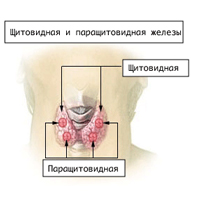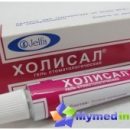What is hyperprolactinemia? What are the manifestations of hyperprolactiamia? How to diagnose and treat hyperprolactinemia? Answers to these questions you will find in the article.
Content
Hyperprolactinemia, manifestations
Prolactin is a hormone produced in the front
The proportion of pituitary glands. It is a protein molecule. Prolactin B
The human body is responsible for stimulating the formation of milk in dairy
glaze. In addition to the pituitary, prolactin is produced by almost all tissues
human body, but significantly less.
Prolactin functions are not exhausted by stimulation
lactation. Prolactin takes part in the regulation of metabolism, in
Regulation of water-salt metabolism and immunity, in the regulation of mental
Functions. But still all the functions of prolactin in the body have not been studied
finally.
The content of prolactin in the body relatively
constant and it increases dramatically during pregnancy. Education
Prolactin has a pulsating character and increases during sleep.
Regulation of secretion of prolactin is carried out by hypothalamus, by production
Prolactolyiberin stimulating hormone. Products increase
prolactin during stress, exercise, with sucking a child
milk during sexual intercourse.
The stimulating effect on the secretion of prolactin is oral
Contraceptives, some drugs (antidepressants,
Cimetidine, metoclopramide, reserpine, verapamil, estrogens, opioid
Analgesics, cocaine).
TO hyperprolaktemia lead:
- Reducing the function of the thyroid gland (hypothiosis)
- Polycystic ovarian
- Hyperplasia of the adrenal cortex
- renal failure
- cirrhosis of the liver.
An increase in prolctin secretion is characterized by syndrome
Chiarry Frohmel, Argonza del Castillo and Forbe-Albright. But Samoa
The resultant cause of increasing the number of prolactin in the blood is the prolactinity of the pituitary.
Prolactinity is a benign tumor from
Iron fabric. Exceptionally rarely prolactinomas are
malignant. Usually prolactine small sizes from 2 to 3 mm.
Then they are called microenomas. Occasionally there are macroenomes
sizes more than one centimeter.

Women prolactinomas are found ten times
more often than men. But men have almost all the adenomes of large sizes.
Sometimes the reason for increasing prolactin in the blood cannot be installed,
Such a condition is called idiopathic hyperprolactinemia.
Long-term increase in blood prolactin causes the development of hypogonadotropic hypogonadism (reduction
Functions of the sex glands with a reduced number of stimulating
Gonadotropins in the blood). This is manifested by the development of infertility and
increased risk of osteoporosis (bone resolution, which
Increases the risk of bone fractures).
In women, most often the main sign of the increase in blood prolactin
It happens a galactorian (spontaneous allocation of milk milk
glands.
In men, this is manifested by a decrease in sexual entry (libido) and the emergence of impotence.
Sometimes men also have the release of milk from the mammary glands.
Sometimes there can be only a selection of several drops when pressing
on the milk gland, in other cases the milk is allocated constantly
or periodically.
Often in women the only complaint is the absence of menstruation or menstrual disorders of the menstrual cycle.
Prolactin oppresses the secretion of follitropine and
Lutropin, which stimulate the formation of estrogen in women.
The lack of stimulating hormones and estrogen leads to a lack of
ovulation and infertility. The lack of estrogen also leads to an increase
body masses, fluid delay in the body and to osteoporosis. If
This is the strengthening of androgens products, women occur
Girsutism (excess hair growth on the body), acne.
In men, excessive products prolactin causes loss of libido, no erection, impotence, gynecomastia
(increase in the mammary glands). With a large prolactinity may occur
Symptoms from the nervous system because the growing adenoma
squeezes nearby fabrics and nerves. In this case, may occur
violation of vision, narrowing of fields of view, violation of the function of the cranial
nerves.
Diagnosis and treatment of hyperprolactinemia
Diagnosis of hyperprolactinemia helps to establish high blood prolactin content.
Discover the adenoma of the pituitary gland allow computer and magnetic resonance tomography.
Treatment of hyperprolactinemia depends on the main
Diseases. To reduce the level of prolactin in the blood apply
Preparations that reduce the products of the prolactin of levodopa, Parlodel, Lizuride,
Lergotril, Peritol, Cirogeptadine. Typically treatment starts with appointment
Parlola. It is effective in 85% of patients.
Radiotherapy and surgical treatment applies. With large
adenoma pituitary, which destroy the Turkish saddle, squeeze
Spectating nerves, prolactin is removed by the operational way using microsurgery.
The results of operational treatment are good. Prolactin level
It is normalized very quickly in 90% of patients, in women in 2-3 months
Regenerate menstrual cycle, Libido is restored in men
And the Erection Indicators are improved.
Worse than the results of treatment in patients with large adenomas.
Radiotherapy applies as an addition to the surgical method
Treatment.









